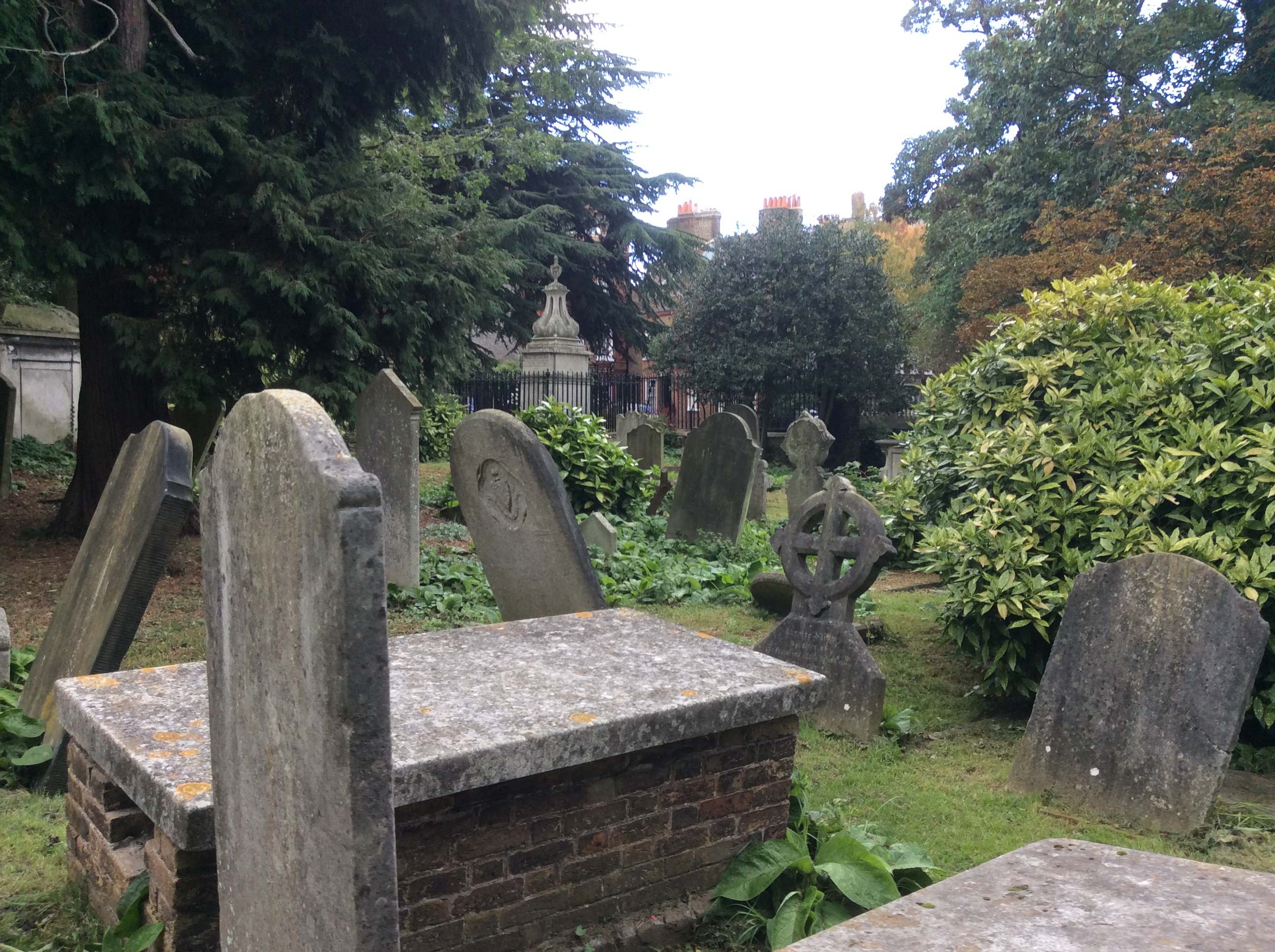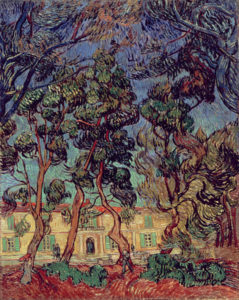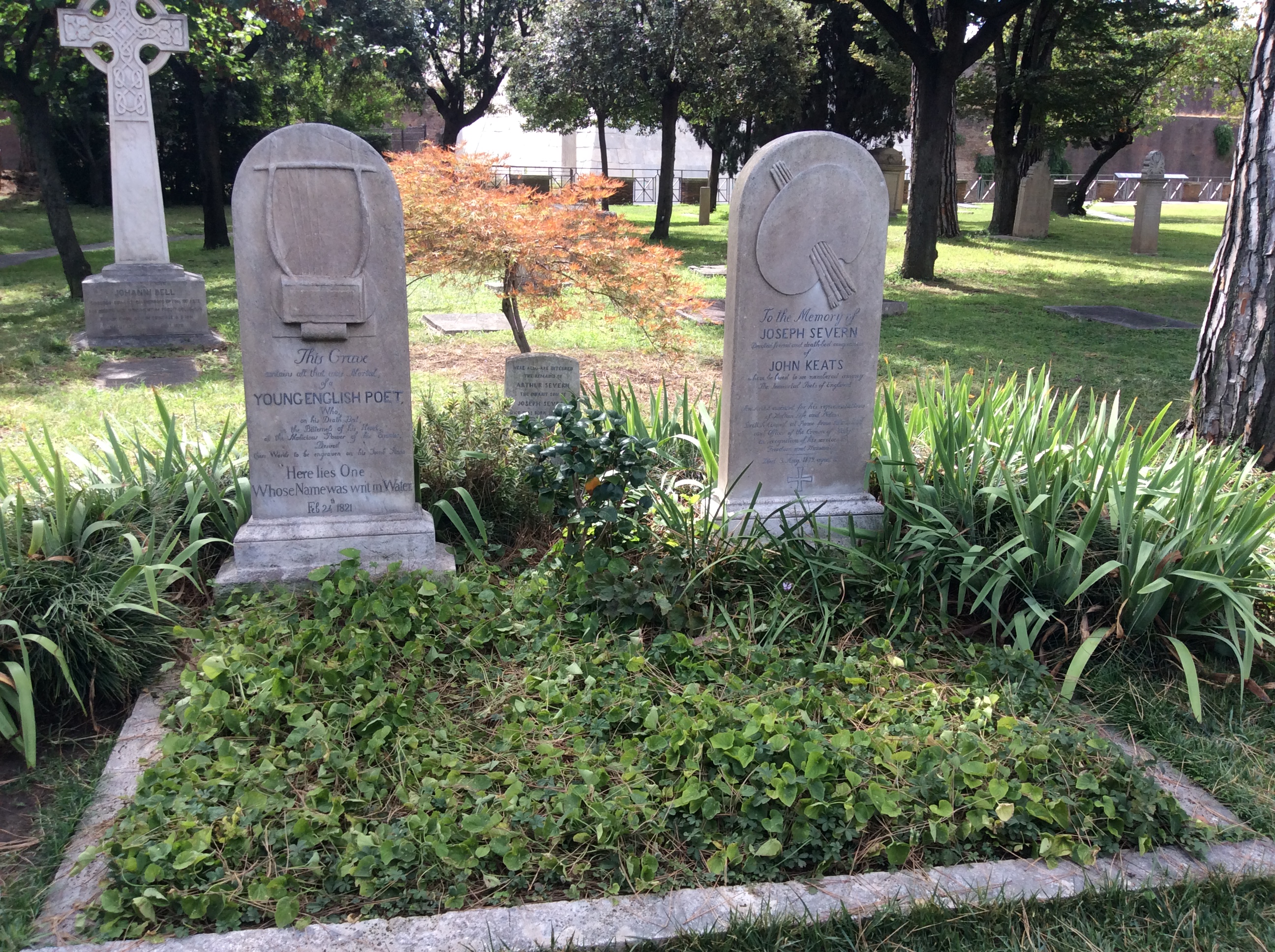Tucked neatly between St Pancras International and St Pancras Hospital, the small and wonderful St Pancras Old Church and its gorgeous churchyard ooze a feeling of enigmatic beauty. But what is it that makes this location so strangely alluring?
The old church is not something you’d expect to find in central London. Obvious for the area of one of the largest train stations in one of Europe’s biggest cities, everything around King’s Cross and St Pancras International is gigantic, overwhelming, industrial.
And if you think of a church in the area, chances are you’d be more inclined to conjure images of St Pancras Church in your mind – the Greek Revival church with its ionic columns and eerie caryatides on several sides of the building. The thing is, this church is comparatively new.
A bit of history…
 The beautiful St Pancras Old Church, on the other hand, is ancient – and rather small. As the newly built up areas around St Pancras, especially near Euston Road, were beginning to boom, the parish quickly decided that it was time for a larger church, so in 1816 they began building the new St Pancras Church.
The beautiful St Pancras Old Church, on the other hand, is ancient – and rather small. As the newly built up areas around St Pancras, especially near Euston Road, were beginning to boom, the parish quickly decided that it was time for a larger church, so in 1816 they began building the new St Pancras Church.
The old church, on the other hand, is believed to be one of the oldest sites of Christian worship in England. In earlier times the parish of St Pancras stretched almost the whole way from Oxford Street to Highgate. The local population abandoned the site in the 14th century and the church was left to its demise, with services only held about once a month at the end of the 18th century. When St Pancras Church was completed in 1822 its predecessor lost its status as a parish church.
Today, St Pancras Old Church is the parish church of Somers Town and a popular go-to place for people seeking a bit of peace and quiet – rather fascinating considering its central location. But it’s also a spectacular place to visit for arts-enthusiasts.
A lovely churchyard…
Shaded gently by many lovely mature trees, the churchyard of St Pancras Old Church also has a fascinating history. It was a popular burial place for many Roman Catholics from around London, including French refugees, the last resting place of composers Carl Friedrich Abel and Johann Christian Bach, as well as sculptor John Flaxman. There’s even a memorial tomb for Mary Wollstonecraft and William Godwin, the writers and philosophers who are today probably more widely known as the parents of Mary Shelley.
But the churchyard’s greatest allure is its peaceful nature. Because of its variety of trees and green spaces and sweet looking gravestones, it’s just a nice place to be. It’s ideal to rest and sit down for a while, perhaps while reading the odd book or contemplating the old stones that decorate the entire area.
A literary background
For literary enthusiasts, St Pancras Old Church is an equally important place to visit. Jerry Cruncher in Charles Dickens’ A Tale of Two Cities is a body snatcher who makes his way to the churchyard at night to steal some corpses for dissection at medical schools.
It was also here that the future Mary Shelley and Percy Bysshe Shelley planned their marriage at the grave of Mary Wollstonecraft. The Shelleys, of course, would go down in literary history as one of the greatest collaborating couples.
The Hardy Tree
 The Hardy Tree, one of the Great Trees of London, is probably the most spectacular of sites to visit if you happen to go to the churchyard. The large ash tree’s roots partially reach out from the soil, forming their way through a pile of neatly arranged headstones surrounding it, making both rock and wood an intricate part of each other.
The Hardy Tree, one of the Great Trees of London, is probably the most spectacular of sites to visit if you happen to go to the churchyard. The large ash tree’s roots partially reach out from the soil, forming their way through a pile of neatly arranged headstones surrounding it, making both rock and wood an intricate part of each other.
Such an odd sight deserves an explanation. The tree gets its name from Thomas Hardy – obviously nowadays known for his great novels such as Tess or Jude, as well as his poetry – who worked here at a young age in the 1860s. He oversaw the excavation of the graveyard while the Midland Railway built the London terminus. Since many of the gravestones were in the way, they placed them in a linear fashion around the tree. More gruesomely, as the railway tracks were being built, many corpses would have been exposed to the open air, so Hardy had to excavate them before the building began – possibly one explanation for the generally gloomy tone in his novels and poetry.
Closing Thoughts
If you’re around King’s Cross or St Pancras International, be sure to visit St Pancras Old Church. If not for the sake of the church itself, then certainly because of its eerie and unnatural churchyard. It’s beautiful and uncanny, and you’re certain to love it.
There’s just something fascinating about cemeteries – especially those overladen with as much history as St Pancras. Perhaps it’s also a fascination with the morbid and death which draws us to the kind of appreciation of ceremonies related to laying people to rest.
If you enjoyed this article, please be sure to leave a comment. Otherwise, please share it on the social media of your choice by clicking on one of the tender buttons below.



 While Mary Shelley’s spouse may be the better poet, she was undeniably the better prose writer, and her Frankenstein; or, The Modern Prometheus from 1818 deserves its place as one of the greatest horror novels of all time. Although it might be very different from what a reader who only knows the movies would expect, it nevertheless represents an eerie exploration of questions about good and evil, life and death, societal issues and the dangers of technological progression.
While Mary Shelley’s spouse may be the better poet, she was undeniably the better prose writer, and her Frankenstein; or, The Modern Prometheus from 1818 deserves its place as one of the greatest horror novels of all time. Although it might be very different from what a reader who only knows the movies would expect, it nevertheless represents an eerie exploration of questions about good and evil, life and death, societal issues and the dangers of technological progression. One of my favourite horror-like stories of all time, Oscar Wilde’s only novel is a wonderful work asking the readers how far they would go to achieve eternal youth – and thus all the splendours and possibilities for hedonistic action that would entail, making this one of the most contemporarily relevant books on this list. With a focus on pleasure-seeking and implications of saucy action (although it hardly ever becomes too explicit), this book is suspenseful from start to finish and frequently raises issues of beauty, the arts, good and evil, and it contains a plot so ingenious that it makes me envious. Not to mention that Lord Henry is one of the wittiest ‘moral guides’ in a novel to date. It might not be straight-forward horror, but in a society as obsessed with looks and youth as ours, Dorian’s fate is sure to deliver you a sense of dread.
One of my favourite horror-like stories of all time, Oscar Wilde’s only novel is a wonderful work asking the readers how far they would go to achieve eternal youth – and thus all the splendours and possibilities for hedonistic action that would entail, making this one of the most contemporarily relevant books on this list. With a focus on pleasure-seeking and implications of saucy action (although it hardly ever becomes too explicit), this book is suspenseful from start to finish and frequently raises issues of beauty, the arts, good and evil, and it contains a plot so ingenious that it makes me envious. Not to mention that Lord Henry is one of the wittiest ‘moral guides’ in a novel to date. It might not be straight-forward horror, but in a society as obsessed with looks and youth as ours, Dorian’s fate is sure to deliver you a sense of dread. I never said this would be a particularly original list! But it’s impossible to make a selection of the best classical horror reads without a reference to Poe. So many poems and short stories of his will make you afraid to go to sleep at night. ‘The Tell-Tale Heart’? A gorgeous account of insanity. ‘The Black Cat’? Beautifully dark and creepy. ‘The Raven’? A lovely eerie poem with one of the best uses of long trochaic lines in all of literature. And all of his writing is perfectly accessible to a contemporary audience. Not all are gothic in nature, but most of them are. All of them are excellently entertaining. His bizarre detective stories starring Auguste Dupin even became the blueprint for master detectives like Sherlock Holmes and Hercule Poirot. For one of the best Poe-experiences, be sure to check out
I never said this would be a particularly original list! But it’s impossible to make a selection of the best classical horror reads without a reference to Poe. So many poems and short stories of his will make you afraid to go to sleep at night. ‘The Tell-Tale Heart’? A gorgeous account of insanity. ‘The Black Cat’? Beautifully dark and creepy. ‘The Raven’? A lovely eerie poem with one of the best uses of long trochaic lines in all of literature. And all of his writing is perfectly accessible to a contemporary audience. Not all are gothic in nature, but most of them are. All of them are excellently entertaining. His bizarre detective stories starring Auguste Dupin even became the blueprint for master detectives like Sherlock Holmes and Hercule Poirot. For one of the best Poe-experiences, be sure to check out 





 But the cemetery is worth it, once you’ve found it. Cypress trees cover the entire cemetery alongside beautifully crafted gravestones of various shapes, some of them hundreds of years old. That’s to say nothing of the huge amounts of blue wild flowers everywhere you look. Even without Keats’ grave, I would suggest that it’s probably the prettiest cemetery out there – even prettier than Highgate (and with the added plus that the entry is free).
But the cemetery is worth it, once you’ve found it. Cypress trees cover the entire cemetery alongside beautifully crafted gravestones of various shapes, some of them hundreds of years old. That’s to say nothing of the huge amounts of blue wild flowers everywhere you look. Even without Keats’ grave, I would suggest that it’s probably the prettiest cemetery out there – even prettier than Highgate (and with the added plus that the entry is free).
 Keats felt so humbled that he didn’t even have his name engraved on his own gravestone. He wished merely to be known as ‘one whose name was writ in water’ – that is, that his name is so fleeting and unimportant that he will be forgotten by everyone.
Keats felt so humbled that he didn’t even have his name engraved on his own gravestone. He wished merely to be known as ‘one whose name was writ in water’ – that is, that his name is so fleeting and unimportant that he will be forgotten by everyone. At least he got to be buried in the place of his choice. Aware of his imminent death, he sent Severn to scout out the area and to see whether it’s a nice burial ground. When Severn reported about the blue flowers and the quiet atmosphere, it was Keats’ wish to lie here – as though the soul and the place belong together.
At least he got to be buried in the place of his choice. Aware of his imminent death, he sent Severn to scout out the area and to see whether it’s a nice burial ground. When Severn reported about the blue flowers and the quiet atmosphere, it was Keats’ wish to lie here – as though the soul and the place belong together.